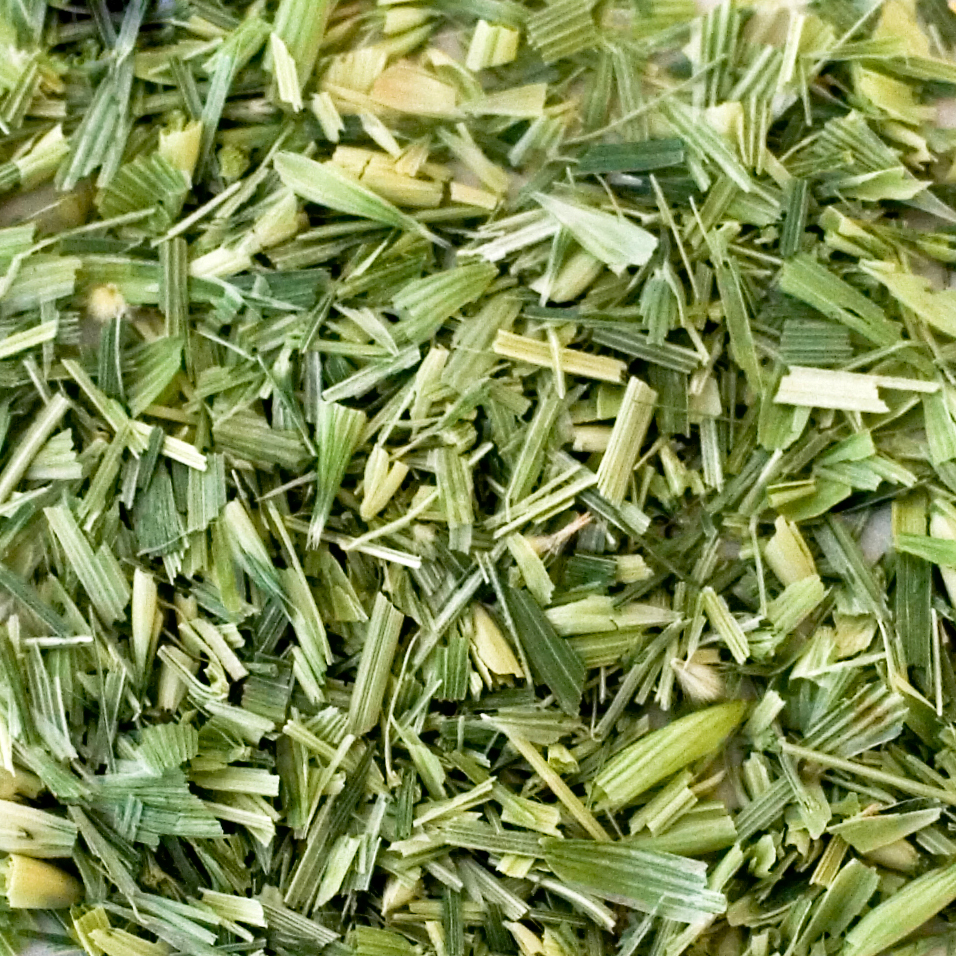Herb of the Month: Oatstraw (Avena sativa)

Oatstraw, Avena sativa, a blessing and gift to the endocrine system, full of calcium, and nourishing to the skin, we thank you!
Oatstraw is an herb that once grew wild, but is among the oldest cultivated grains. Oatstraw is from the same plan as oats themselves, but is the whole flowering top of the plant, not just the ripened grain. The flowering tops and grassy leaves are harvested in what is called “the milky stage” of the plant’s development, when the seeds are begining to swell and ripen, but are not fully ripe. This results is a lovely, grassy, green herb as you can see in the picture below. Oats are a grass, growing in meadows, banksides and grainfields.
This herb yields (per 100g dried) 1430 mg of calcium, 4.6-57 mg of iron, and B complex vitamins ranging from 0.4mg to 4.94mg. This nutrient rich herb benefits our bodies and supports us on so many levels.
Oatstraw has been used to cal and relieve stress and anxiety, due to its levels of vitamin B. The German Commission E in October 1987 published their findings to this effect. When used as a nervine herb, oastraw strengthens the nerves and encourages a good night’s sleep.
In 2000, Integrated Herbal Communications published their findings relating to oatstraw and endocrine effects. Oatstraw contains luteinizing hormone, which was found to trigger ovulation in femals, and a release of testosterone in males. This finding supports the uses of oatstraw as a sexual stimulant for those struggling with a low sex-drive, or impotence. Oatstraw nourishes the capillaries and strengthens the walls of arteries, helping improve circulation and blood flow. It lubricates the endocrine system, and strengthens connective tissues.
Oatstraw is so high in calcium, and taking an infusion of oatstraw on a regular basis promotes bone and tooth health. It can be used to lessen the severity of menstrual or other muscle cramps. In 2011, the Journal of Alternative and Contemporary Medicine found that Oatstraw improved the cognitive function ina control group of elderly adults. They reported better focus, longer attention, and better concentration ability.
Oatstraw also stabilizes blood sugar levels. It contains phytosterols, which have been suggested to lower cholesterol, and lower the risk for heart disease.
Making an Oatstraw Infusion:
Take about 1/2 cup (dried) oatstraw herb, and place in a dry 1 liter mason jar. Boil water, and pour over the herb in the par, stirring so all the herb is submerged. Cap tightly, and allow this mixture to infuse for 4-8 hours (or overnight). Drink 1-4 cups a day.
Using an infusion of oatstraw as a hair rinse nourishes and strengthens the hair.
Oatstraw on the skin:
Oats and oatstraw are excellent for soothing any skin irritation. Itchy, dry, flaking skin will be nourished and glowing after a bath with oats. Place a small handful of oatstraw in some cheesecloth, wet it when in the shower, and use as a scrub. Or make an infusion, and add a jar to the bathwater. Alternatively, making a small bundle in cheesecloth of oatstraw, lavender and chamomile and placing this in a hot bath, you will have one of the most relaxing, moisturizing calming baths.
